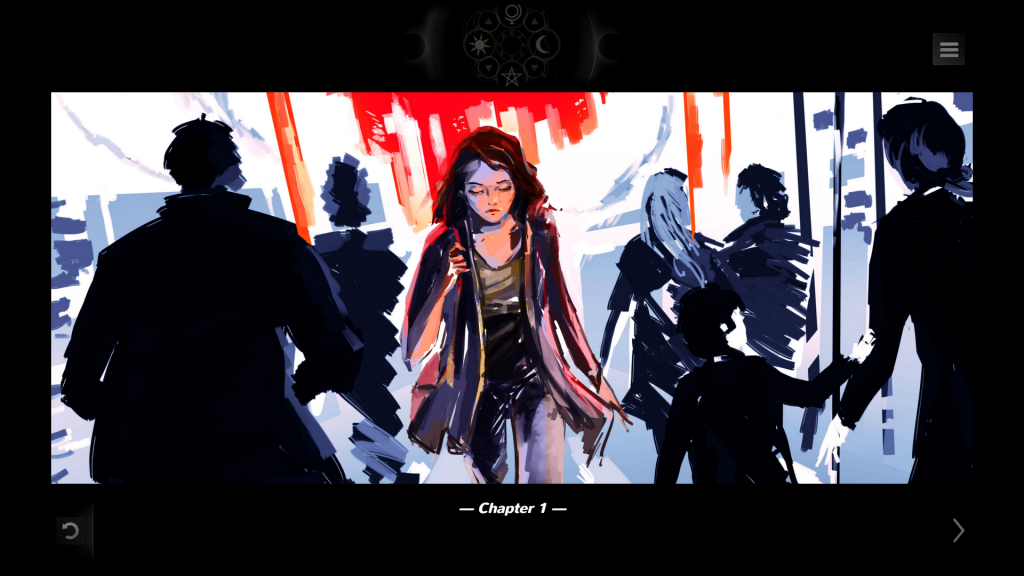Along the Edge is an interactive visual novel telling the story of Daphné Delatour, a PhD student who is in pain. We meet Daphne during a session with her therapist, Dr Durant, where we learn that she has inherited her Grandmothers’ house and is leaving the city to make a fresh start.
Daphné has recently broken up with her long-term partner, Frank, is estranged from her mother (her only known surviving family) and has no real friends at University. Throughout the rest of the story – and I say story, because it really does feel more like a novel than a game – you are presented with decisions which will affect the rest of your experience. The introduction to the game explicitly tells you that there are no ‘good’ or ‘bad’ decisions, but to choose wisely.

The first thing you can’t fail to notice is the artwork. The beautiful oil painting style is massively impressive, and the transition between images gives the effect of storybook illustrations. The music is subtle, using background noises such as bird song or the bustle of a market to immerse you in the story, and the occasional light piano pieces set the mood perfectly, adding a feeling of suspense, malevolence, longing and discovery. The whole experience comes together to create a sense of surrealism. As if you’re reading the story behind pieces in an art gallery, or recalling a dream that doesn’t quite make sense.
As Daphné begins to find out more about her family, you discover a tale of family rivalry, witchcraft and a suspicious tower connected to Daphné’s house with no entrance. We meet a host of characters who all have something to say, but are reluctant to say it, and then Daphné starts to have strange dreams.

Depending on the choices you make, the twists and turns of the story may involve rekindling of old relationships or forming new alliances, reacting against illogical rumours or embracing an unexpected calling, becoming a local hero or retreating to your castle alone. The choices you make change Daphné’s appearance too, symbolising various states of being, including growth beyond her student naivety or acceptance of her mystical heritage.
When you make a decision, one or two of a possible 4 icons lights up at the top of the screen – The Globe, The Moon, the Star and The Sun. From what I can make out, they represent logic (science), anger, witchcraft and kindness. At the end of each playthrough you unlock a number of achievements based on the choices you made.
Occasionally the story can become disjointed, as you are given the opportunity to backtrack on decisions made earlier in the game and the translation into English gets a little sloppy around half way through – almost as if Nova Box were running out of time to complete it – which broke my immersion in the narrative from time to time.

The game isn’t short and, due to the large amount of text, is quite a lot to take in – I had to split playthroughs up into several sittings. The game does offer multiple saves, but it would be nice to be able to go back to previous ‘checkpoints’ at pivotal decisions to be able to take a different course without needing to replay from the beginning.
With over 60 different endings the game offers a lot in terms of replayability, and the achievements definitely spurred me on to start again. I was impressed with the differences to the story between playthroughs, it was nice to feel that although major plot points were always visited, you were actually making a difference to how things played out, seeing totally different sections depending on your choices.
Along the edge is available to buy via itch.io and the Mac App Store.
